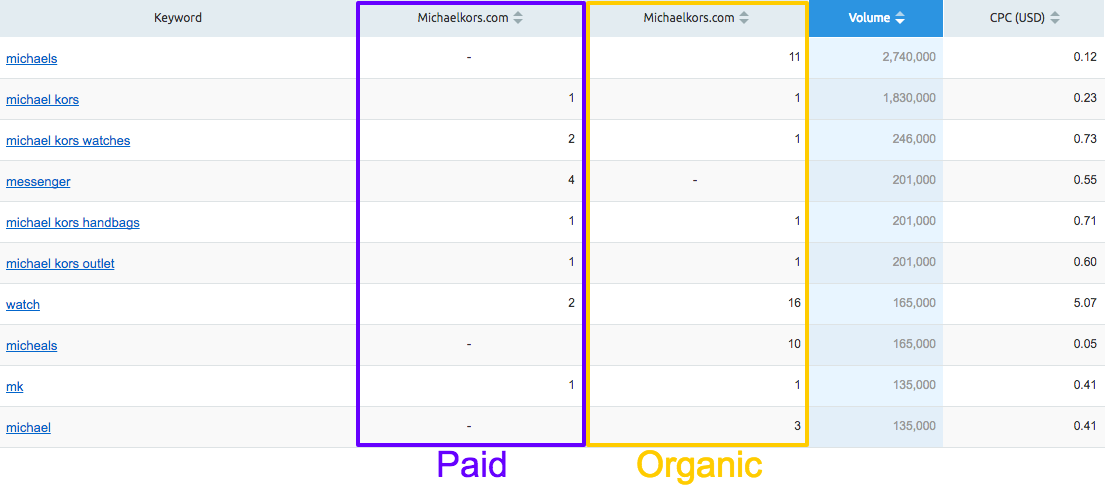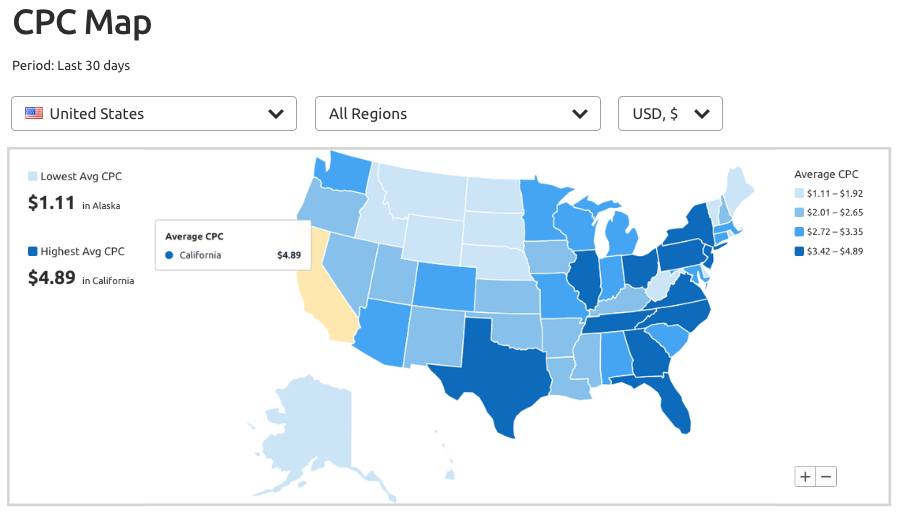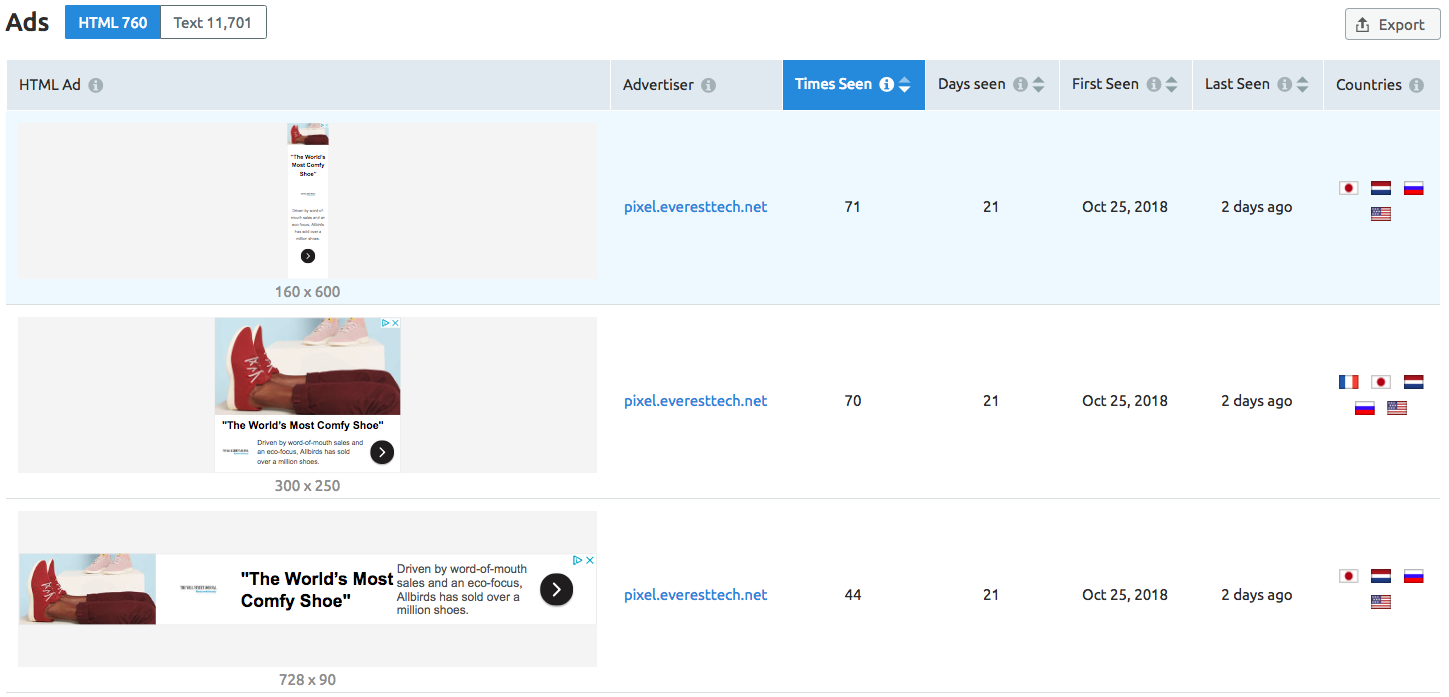PPC can be hard, but the data you get from competitive research can make your job a whole lot easier.
SEMrush is mostly known as a competitive intelligence suite, so it is no surprise that when it comes to PPC activities that we strongly rely on our online competitor analysis. Based on our own experience, we have figured out six important things advertisers should keep tabs on to make the most of their research.
This post will help you better understand how to analyze your rivals’ Google Ads strategies and use the accumulated information to achieve your goals. Our Advertising toolkit has been developed to help SEO and PPC specialists streamline their online marketing practices and take their competitive research to a whole new level.
Organic vs. Paid: Uncover Your Rivals' Strategies
By looking at how other advertisers combine SEO and PPC strategies you can better understand what happens in the ever-changing search marketing landscape. When it comes to organic and paid search, there is a never-ending discussion. Should you bid on a keyword if you rank number one for that term organically? Or should you remove this keyword from your PPC campaign?

Comparing your competitors’ organic and paid search efforts side by side will give you a good idea of which tactics are used by other advertisers in your niche. In the Keyword Gap tool, you can compare your rivals’ organic to paid keywords and see if they pay to advertise on terms that they already rank well for in the organic results.

On the screenshot below, you can see that the analyzed website is running paid ads on some of the keywords that it already ranks for on the first page of Google.

Figuring out which keywords your competitors are after and what they are doing to rank for them will help you shape your PPC campaign. This information will be your ace in the hole: it can give you some direction on where to focus your ad spend.
Key Takeaways: Analyze how your competitors are doing in terms of organic versus paid search efforts. Find out both their most commonly used tactics, as well as gaps in their strategies. Use your findings to come up with ways to beat the PPC sharks in your industry.
CPC Estimation: Evaluate the Cost of Doing PPC in Your Region
When planning an advertising campaign, you need to have a clear vision of what happens in the market. For businesses that target multiple locations within one country, it is especially worth evaluating the potential of a local PPC strategy for their specific industry.
People search for different things in different places, and the average cost advertisers pay per click varies by location. If you run local ad campaigns, you can use the CPC Map tool to find out the average CPC in different regions for your specific niche. This information will help you distribute your budget wisely among your local ad campaigns.
CPC Map is an interactive map that displays the average CPC in a particular state or region for 17 industries: from Online Banking and Real Estate to Fashion Retail and Travel. Currently, the tool is available for several countries, including the US, the UK, Canada, India, Australia, Brazil, Italy, Spain, France, Germany, Austria, South Africa, and Russia. It also allows you to check the average volume of queries related to a particular niche in different areas.

Use data provided by the CPC Map to figure out how competitive your industry is, and which areas will be the most receptive and affordable to advertise your product or service. You can analyze your market in detail by switching between regions in the report to compare average CPC and average search volume in different locations for your niche. View the most expensive and popular keywords related to your business in a selected area. While conducting research, you may discover that the most expensive terms are not necessarily the most popular ones.

In the report, you will also find a trend graph, which lets you track how costs change over time and predict the trend for the next month.
Key Takeaways: Evaluate the average cost of advertising in a specific area. Analyze PPC costs and PPC demand to find ideas for A/B testing and experiments; discover “hidden gems” – keywords with high search volume and moderate CPC – and understand which locations will be the easiest to target, so you can focus your efforts in the right direction.
Competitor Keywords: Discover What You Might Have Missed
No matter how much keyword research you do, there is always a risk that you can miss some relevant, high-potential terms and phrases. Exploring the competitive landscape can provide you with fresh ideas and boost your creativity. What keywords are your rivals using? Are your competitors bidding on terms you have missed?

It is important to check where you are being outperformed so that you can shift your focus. The Keyword Gap tool allows you to compare your domain’s keyword portfolio to those of your closest competitors.
Enter the domains you want to analyze and select your “keyword type.” You can either compare the same keyword types (e.g., paid keywords) or compare one domain’s paid keywords to another domain’s organic keywords. You then need to choose the “intersection type” for the search terms. If you select “Unique to the first domain’s keywords,” you will be able to view terms you might not have considered for your PPC campaign.

In the first column, you can see the keywords that the first domain ranks for, but the second domain does not:

The report also allows you to dive deeply into data and discover more details:
A domain’s position in paid results for the given keyword.
Volume
Cost-per-click
Competitive density
Number of results
Key Takeaways: Discover terms and phrases your competitors are using in their ads and analyze data to understand how cost-efficient a certain keyword can be for your business. Do not look at paid keywords only, as organic terms can also provide you with some great ideas for your campaign. Be sure you do not let other PPC players seize your positions!
SEO Bonus: Enriching your keyword list with additional search terms can increase your chances of appearing in the SERPs next to your top competitors’ websites. The larger your keyword pool, the better your chances of reaching your prospective clients.
Ads: Analyze Seasonality and Tailor Your Campaign Around It
To ensure the success of your Google Ads campaign, you need to take a strategic approach. When planning your PPC campaign, it is worth analyzing seasonality to better understand what keywords are used most frequently by advertisers during certain months. These insights will help you make more informed decisions to get the best impact from your efforts.
The Ad History report in the Keyword Analytics section is the perfect place to view previous ads of competitive brands to analyze how specific keywords perform in paid search. The report allows you discover which months are the busiest in your niche in terms of online advertising and when is the off-season. Just type a term or phrase and hit the search button, and you will see a list of domains and a table, which shows where each domain’s ad ranked for this keyword in a specific month. A blank space means that no ads from this particular domain targeting this exact keyword were found by SEMrush. To see how the ad appears on the results page, click on a box with a position number.

On the above screenshot, you can see that the domains mostly advertise for the term “sport shoes” in autumn and winter. This means that the competition is particularly high during this season. Therefore, it might be worth considering attracting your audience with more sales and special offers and increasing your advertising budget. Nevertheless, you should always keep in mind that what worked for others may not necessarily work for you in the same way.
Key Takeaways: Pay attention to the seasonal fluctuation that has an impact on how your PPC competitors use their ads. It will allow you to plan your campaign ahead of time. Use your rivals’ experience to avoid pitfalls and minimize potential errors in your strategy.
Ad Copy: Revitalize Your Ads
You are staring at a blank screen, feeling as if inspiration has left you once and for all. Or your ad copy seems boring and flat, and you have no idea how to breathe life into it. But do not get discouraged. You can easily overcome your blank page syndrome and reawaken your creativity by borrowing some ideas from your competitors.
Your rivals’ PPC ad copy can be a great source of inspiration. By "borrowing ideas" I mean consuming and analyzing other people’s inputs to spark your creative energy. You can discover how your rivals structure their ads in the Ad Builder tool. Just enter a seed keyword to see the text ads triggered by this keyword. Additionally, you can view the ads for a specific competitor.

To collect new ideas for your display ads, you can also explore data provided by our Display Advertising reports.
You can either enter your competitor’s domain to see if they have display advertising campaigns or search ads by a particular word or phrase to discover ads in which that term was used by any advertiser. In the “Ads” section of the report you will be able to view how those ads look and get other details, including the number of times the ad was seen and countries where SEMrush has found the ad running.
For example, here are several examples of ads that are run by hm.com:

But let’s say you want to find ads related to a specific topic. Just type in the word “shoes” and you will discover ads in which this term is used:

When it comes to display advertising, creativity can work wonders. By incorporating the best ideas from your top competitors you can expand your marketing vision and nurture your creative spirit. It will help you create ads people won’t be able to resist the urge to click on.
Key Takeaways: Take the germ of an idea and start building from it. Analyze what your competitors tend to emphasize in their ads, whether it is discounts, free shipping, product quality, or compelling images. Adapt the collected ideas for your ads.
Pro Tip: Explore our SEMrush Annual E-commerce study to see the most popular emotional triggers and even the discount percentages used most frequently across different industries and countries.

Mobile Usage: Enrich Your Multi-Device Strategy
According to Smart Insights, in most countries, people prefer multi-platform usage and they switch between mobile and desktop. To stay ahead of the PPC competition in 2019, advertisers should understand what works and what does not in the world of mobile paid search, so that they can effectively communicate their message to their customers.
Keep in mind that the keywords you target to appeal to desktop searchers may differ from the terms and phrases used in your mobile campaigns. Discovering the best practices of other advertisers can help you strengthen your efforts and build an effective mobile PPC strategy. In the Advertising Research report, you can view a mobile report in addition to the desktop report. You will be able to see a list of the mobile keywords that trigger ads for the analyzed domain and compare them to those from the desktop report.

If you are focusing your efforts on display advertising, it can be useful to analyze the Google Display Network ads of your competitors on different devices. Our Display Advertising reports enable you to compare the proportion of your rivals’ display ads on desktop, mobile, and tablet.

Keep in mind that the way different device types are targeted can vary significantly across different industries. Our Display Advertising Stats report shows that desktop remains the preferred device among advertisers in the software niche, meanwhile, the Retail Trade industry is mainly focused on iPad users and targets desktop in the campaign least frequently.
Key Takeaways: Google Ads mobile advertising is the key to getting your business in front of people who are on the go. If you use both desktop and mobile ads, be sure that you tailor them to specific audiences, as desktop and mobile users are two different personas. They have different behaviors and user experiences, so you need to ensure that your ad formats, creatives and message also differ, based on which audience you want to target with your ads. Learn from your top-performing competitors and see how they adjust their advertising strategies for different devices. Use these insights to provide the best-paid search experience to both mobile and desktop users and build a message that perfectly appeals to your target audience.
Competitive Intelligence for the Competitive Edge
There is a limited amount of space on the desired first page of Google. The paid search landscape is now fiercely competitive, and it is becoming increasingly more difficult to differentiate yourself. You cannot simply launch your ads and hope to instantly get a high volume of traffic. One of the best ways to have the upper hand in the PPC battle is to conduct a thorough competitor analysis and turn it into actionable PPC gains.
When researching and analyzing your competition, you need to focus on what really matters. Pay attention to the important aspects of your rivals’ campaigns as described above. With all these golden nuggets of information, you can try to forecast what your competitors are likely to do in the future, adjust your campaign accordingly, and pave your path toward PPC success.
Outsourced PPC or Local PPC management?
Innovative SEO services
SEO is a patience game; no secret there. We`ll work with you to develop a Search strategy focused on producing increased traffic rankings in as early as 3-months.
A proven Allinclusive. SEO services for measuring, executing, and optimizing for Search Engine success. We say what we do and do what we say.
Our company as Semrush Agency Partner has designed a search engine optimization service that is both ethical and result-driven. We use the latest tools, strategies, and trends to help you move up in the search engines for the right keywords to get noticed by the right audience.
Today, you can schedule a Discovery call with us about your company needs.
Source:





